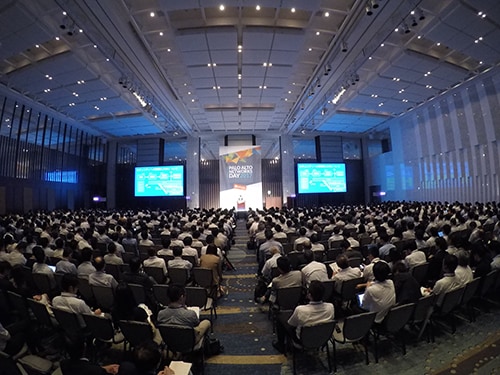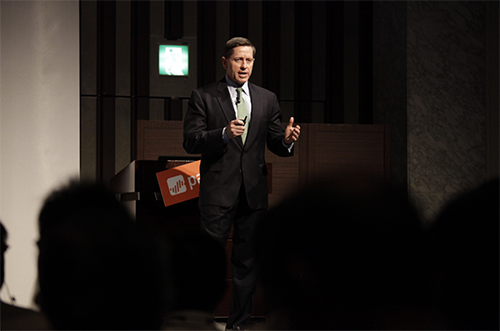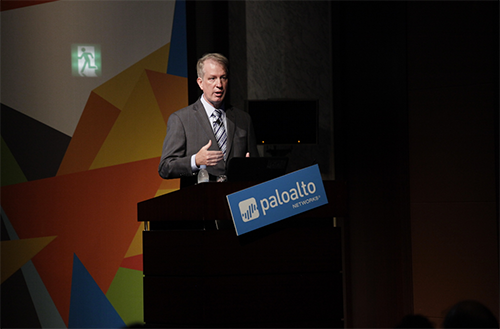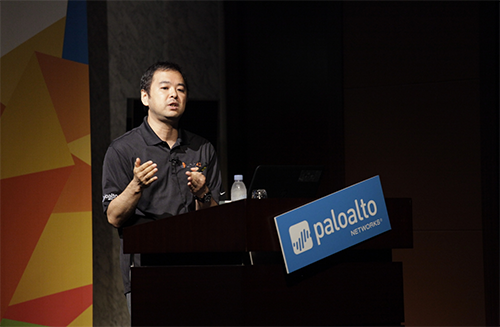Palo Alto Networks Day Japan 2017: Evolving Cybersecurity Efforts to Increase Trust in the Digital Age and Prevent Cyberattacks
(This blog post is also available in Japanese.)
Palo Alto Networks Day 2017, our third annual global cybersecurity conference in Japan, was a great success, attracting over 2,600 registrations. The number of attendees has more than doubled each year of the conference; and the spike in attendance reflects growing interest in cybersecurity updates on next-generation technology, the current cyberthreat landscape, Japan’s cybersecurity policy, cloud and IoT security, and the protection of critical infrastructure. Keynote speakers repeatedly referred to the importance of agility, automation, and cyberthreat intelligence sharing.

Mark McLaughlin, chief executive officer and chairman of Palo Alto Networks, emphasized in his keynote that we live in the digital age, meaning our businesses rely on digital technologies to increase our productivity on a global basis. Adversaries are taking advantage of the declining costs of launching automated cyberattacks and are doing so at high speeds, whereas defenders are suffering from the growing complexity of cyberthreats and depend on manual responses. This can lead to eroding trust and decreasing productivity. That is why there has been an increased focus on cybersecurity platforms over the last ten years to pursue automation, innovation, orchestration, and cyberthreat intelligence sharing to prevent successful cyberattacks.

No single company can address all of the complexities of cybersecurity and be responsible for all the innovations needed to secure the digital age. The market finds it challenging to access and absorb the latest solutions. Mark shared an example of the disruptive evolution of cybersecurity solutions to address these issues: Palo Alto Networks Application Framework. This offering was launched four months ago to allow any vendor to develop applications for the framework and access a massive amount of data. Users do not need to deploy anything to their environment. All they have to do is turn on the application they want to use. As of today, more than 30 vendors contribute to the Application Framework, and we expect this community of developers to grow.
We also heard from an end-user company, Recruit Technologies Co. Ltd., who shared their IT and cybersecurity journey from the last few years. They consolidated their data centers, increased automation, and shifted from private to public cloud for agility and flexibility. Mr. Hiroshi Hoshina, IT Solutions Control division from Recruit Technologies, explained how his company uses access control, segmentation, and Palo Alto Networks products to enhance their cybersecurity. While network infrastructure used to only focus on its functions and operational stability, consumers now demand more agility after the invention of virtual technologies, and software-defined agility is more appreciated.
We also had two researchers from Unit 42, our threat intelligence team, speak about the current cyberthreat landscape. Brad Duncan shared his observations of the wide-scale distribution of information-stealing malware and ransomware, and encouraged the audience to apply such best practices as patching, regular backup, and browsing restrictions.

Kaoru Hayashi acknowledged the steady growth of cyberthreats, tactics, and tools, and culprits have been able to create an underground ecosystem to divide their work roles and take advantage of online anonymity, and automated and cheap technologies, to launch various attacks. He emphasized that cyberattackers have to be successful all the way through their attack lifecycle to achieve their malicious goal, and defenders need to utilize cyberthreat intelligence to cripple their malicious intent and moves at any of the attack lifecycle stage before they succeed. Without cyberthreat intelligence, leadership can neither elucidate what risks their organization currently faces nor decide on what needs to be done. Organizations need technologies, automation to share cyberthreat intelligence effectively, and people who understand the importance of such intelligence to bridge the gap between engineers and leadership.

Palo Alto Networks would like to thank all of the attendees, speakers, and our sponsors for your contributions to increasing cybersecurity awareness, and for making this a successful event. We look forward to welcoming you all back to Palo Alto Networks Day 2018 in Tokyo next year!
Related Blogs
Subscribe to the Newsletter!
By submitting this form, you agree to our Terms of Use and acknowledge our Privacy Statement. Please look for a confirmation email from us. If you don't receive it in the next 10 minutes, please check your spam folder.